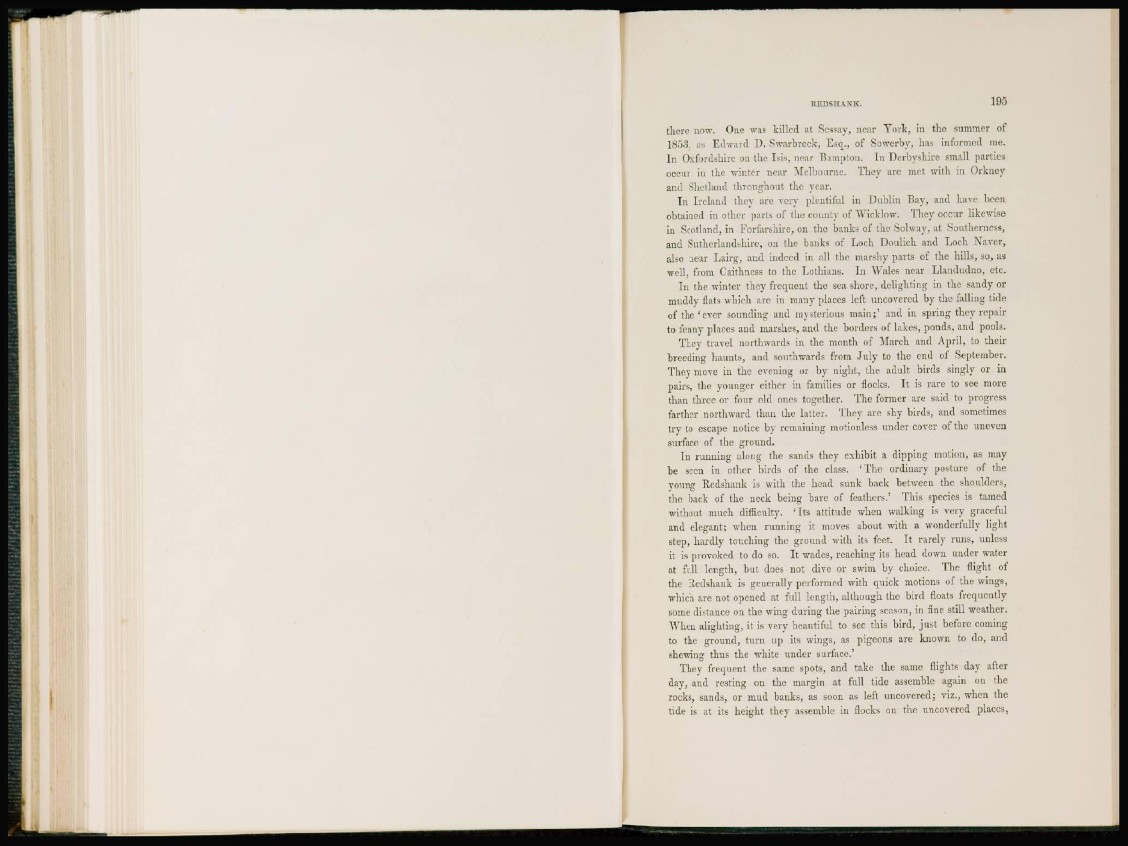
REDSHANK. 195
there now. One was killed at Sessay, near York, in the summer of
1853, as Edward 1). Swarbrcck, Esq., of Sowerby, has informed me.
I n Oxfordshire on the Isis, near Hampton. In Derbyshire small parties
occur in the winter near Melbourne. They arc met with in Orkney
and Shetland throughout the year.
I n Ireland they are very plentiful in Dublin Bay, and have been
obtained in other parts of the county of Wicklow. They occur likewise
in Scotland, in Forfarshire, on the banks of the Solway, at. Southerncss,
and Sutherland shire, on the banks of Loch Doulich and Loch Navcr,
also near Lairg, and indeed in all the marshy parts of the hills, so, as
well, from Caithness to the Lothuuis. In Wales near Llandudno, etc.
I n the winter they frequent the sea shore, delighting in the sandy or
muddy flats which are in many places left uncovered by the falling tide
of t h e ' e v e r sounding and mysterious main;' and in spring they repair
to fenny places and marshes, and the borders of lakes, ponds, and pools.
They travel northwards in the month of March and April, to their
breeding haunts, and southwards from July to the end of September.
They move in the evening or by night, the adult birds singly or in
pairs, the younger either in families or flocks. It is rare to sec more
than three or four old ones together. The former are said to progress
farther northward than the latter. They are shy birds, and sometimes
try to escape notice by remaining motionless under cover of the uneven
surface of the ground.
In running along the sands they exhibit a dipping motion, as may
be seen in other birds of the class. 'The ordinary posture of the
young Redshank is with the head sunk back between the shoulders,
the back of the neck being bare of feathers.' This species is tamed
without much difficulty. ' Its attitude when walking is very graceful
and elegant; when running it moves about with a wonderfully light
step, hardly touching the ground with its feet. It rarely runs, unless
it is provoked to do so. It wades, reaching its head down under water
at full length, but does not dive or swim by choice. The flight of
the Redshank is generally performed with quick motions of the wings,
which are not opened at full length, although the bird floats frequently
some distance on the wing during the pairing season, in fine still weather.
When alighting, it is very beautiful to sec this bird, just before coming
to the ground, turn up its wdngs, as pigeons are known to do, and
shewing thus the white under surface.'
They frequent the same spots, and take the same flights day after
day, and resting on the margin at full tide assemble again on the
rocks, sands, or mud banks, as soon as left uncovered; viz., when the
tide is at its height they assemble in flocks on the uncovered places,